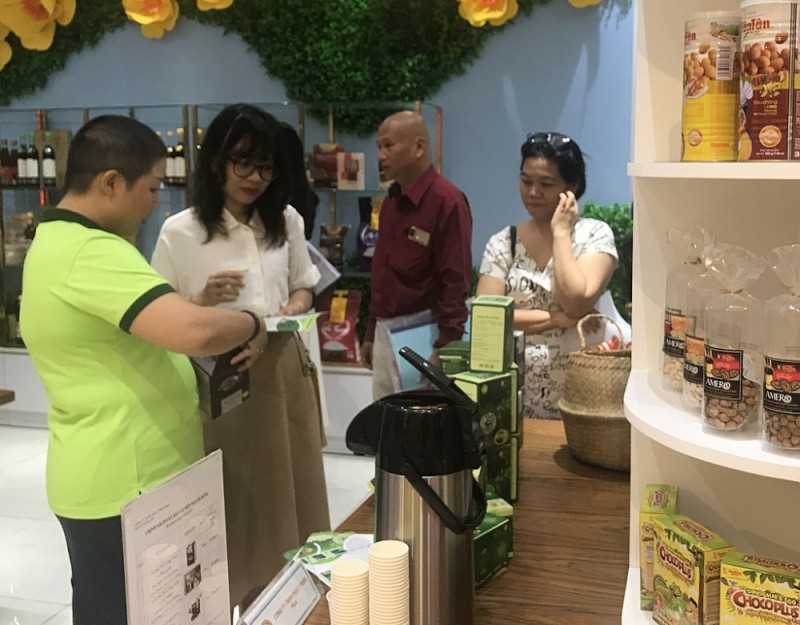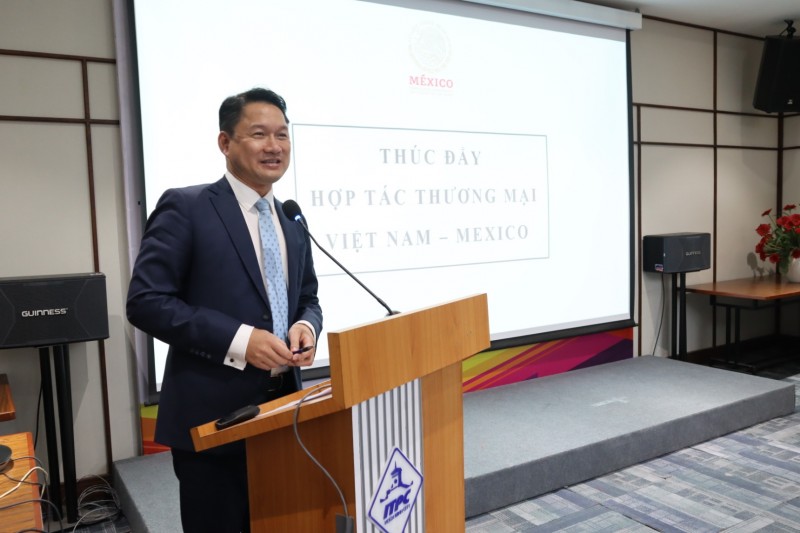Agricultures, Foods, News & Event
Many opportunities to export agricultural products and food to Mexico
INDUSTRIAL TRADE – Many export agricultural products of Vietnam such as seafood, coffee, rubber… have been exported to the Mexican market and achieved a relatively high growth rate of 27-65%.
Potential market
Bringing products from tea, coffee and herbs combined with dandelion to attend the seminar: “Promoting trade cooperation between Vietnam and Mexico”, Mr. Do Thanh Phuong, Director of the Company P&K Development Ltd said that participating in these programs helps the company find partners to expand its domestic market share, as well as export cooperation.
Currently, his company invests in planting areas in Tan Hong, Dong Thap with enough raw materials for domestic consumption, so it is looking for partners to expand the planting area, aiming for export.
Like Mr. Phuong, more than 100 Vietnamese enterprises operating in the fields of energy, telecommunications, high-tech agriculture and other high-value-added industries… attending the seminar also wanted to find opportunities. promote linkages and cooperation in investment and trade, and expand exports to this market.

According to Ms. Cao Thi Phi Van – Deputy Director of Ho Chi Minh City Investment and Trade Promotion Center. In recent years, economic and trade relations between Vietnam and Mexico have been continuously expanded and developed, especially since the Comprehensive and Progressive Agreement for Trans-Pacific Partnership (CPTPP). was signed and took effect from the beginning of 2019. As a dynamic developing economy, Mexico is gradually becoming an attractive market area for the whole world, including Vietnam.
Statistics from the General Department of Vietnam Customs show that in 2022, bilateral trade turnover will grow positively, reaching $5.421 billion, up 7% compared to 2021. In which, Vietnam’s export turnover to Mexico is estimated at 4.532 billion USD.
Alejandro Negrin Munoz, Mexican Ambassador to Vietnam, shared that Vietnam is also a very dynamic market and is highly appreciated by Mexico in Asia. The items that the two countries regularly exchange and trade are electronic circuits, telephones, components and spare parts for machinery, automobiles, leather, cotton, etc.
“The current exchange value is not commensurate with the market size and potential that each party has. Therefore, it can be affirmed that the potential for trade cooperation between Vietnam and Mexico is still very large and needs to be exploited. more efficient and balanced extraction,” said Alejandro Negrin Munoz.
Take advantage of FTAs
Mr. Vu Minh Anh, Honorary Consul of the Mexican Consulate in Ho Chi Minh City. Ho Chi Minh City said that, thanks to the 0% tax rate, in 2022, pangasius will be Vietnam’s main agricultural product when exported to Mexico. Despite the trade surplus, most of them are intermediate goods, the proportion of “made in Vietnam” is not large.

Mr. Vu Minh Anh said that in addition to direct investment, Vietnamese enterprises should “change their thinking towards the global supply chain”. Instead of devoting a lot of resources to direct investment, businesses can find Mexican partners to conduct joint ventures, taking advantage of each other’s strengths to produce goods and services for fastidious markets. high requirement.
According to Ms. Vo Thi Phuong Lan, Vice President of the Ho Chi Minh City Logistics Association. Ho Chi Minh City (HLA), Mexico connects the Atlantic Ocean and the Asia-Pacific, has a long coastline, so it is very convenient for trade and transportation of goods by sea.
With the advantage of being CPTPP members, Mexico has committed to eliminate 77% of tariff lines immediately, equivalent to 36.5% of import turnover from Vietnam and will eliminate tariffs on 98% of tariff lines by 2020. tenth from the date of entry into force of the Agreement.
As a result, Vietnam’s exports of seafood, coffee, rubber, telephones, and auto parts and components to Mexico recently achieved a fairly high growth rate of 27-65%. In contrast, Mexico has also step by step promoted the export of beef, pork, agricultural products and beverages to Vietnam.
Ms. Lan added that to achieve economic efficiency in goods trade, businesses need to optimize logistics costs by using an integrated logistics service chain: customs declaration, domestic transportation, international transportation, warehousing… At the same time, optimizing transportation, using imported containers to pack export goods helps businesses reduce 50% of domestic transportation costs; Using import containers to pack export goods helps businesses save time and improve production capacity.
Source: https://congthuong.vn/nhieu-co-hoi-xuat-khau-nong-san-thuc-pham-vao-mexico-247621.html
